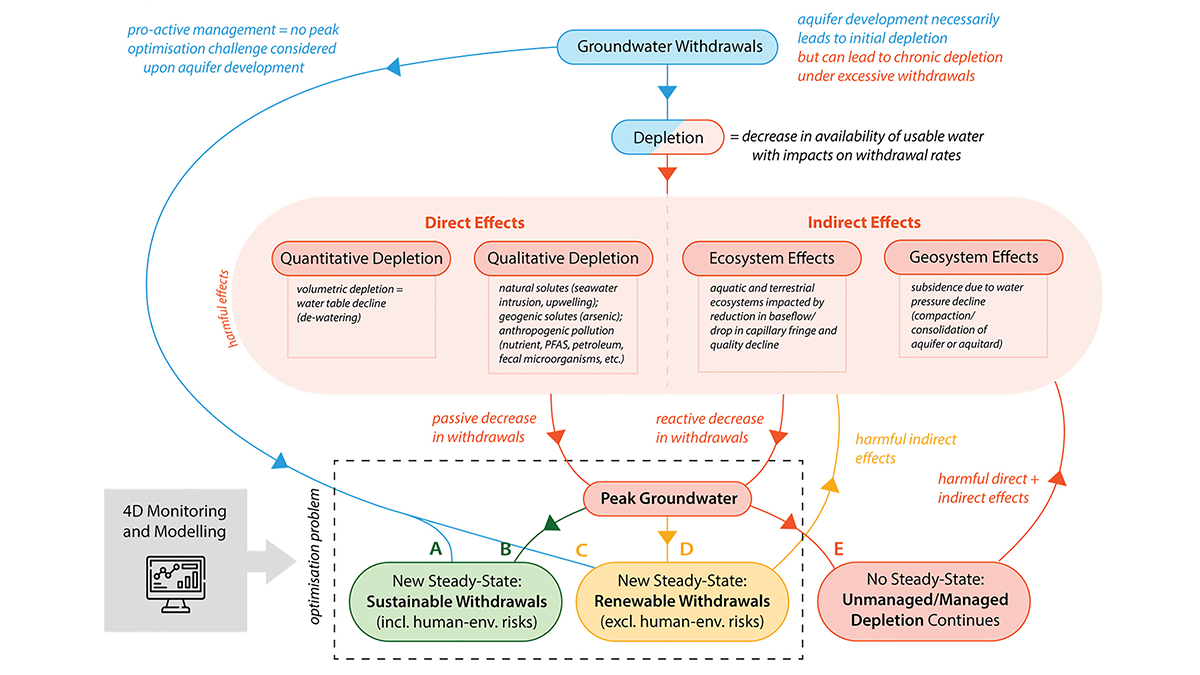Editors’ Highlights are summaries of recent papers by AGU’s journal editors.
Source: Earth’s Future
Groundwater supports billions of people, but many regions are removing it from aquifers faster than nature can refill them. Bhalla et al. [2025] examine the concept of “peak groundwater”, the moment when use reaches its maximum and begins to decline due to physical, economic, or policy limits. The authors trace how climate pressures, population growth, and management choices interact to determine when those limits arrive. They show that peak groundwater is not only a physical threshold but also a social and institutional one, shaped by how communities plan for scarcity.
The review offers a clear framework for recognizing early signs of stress and explores practical actions that can extend the life of aquifers. By bringing together insights across disciplines, it lays out pathways for governments, water managers, and communities to respond proactively. This synthesis offers a timely guide for protecting groundwater in an era of rising uncertainty.
Citation: Bhalla, S., Cherry, J. A., Konikow, L. F., Taylor, R. G., & Parker, B. L. (2025). Peak groundwater: Aquifer-scale limits to groundwater withdrawals. Earth’s Future, 13, e2025EF006221. https://doi.org/10.1029/2025EF006221
—Kelly Caylor, Editor-in-Chief, Earth’s Future


